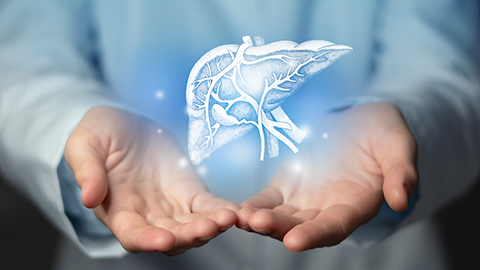
A client with hip and back pain is referred to a massage therapist by her chiropractor. But there’s a hitch: This person also has arrhythmia and hemochromatosis.
Hemochromatosis is one of the most common inherited disorders in White people, and it can lead to life-threatening complications. One of those complications might be a factor in this client’s situation. Fortunately, if it’s found early, hemochromatosis is highly treatable. Listen to this episode of “I Have a Client Who . . .” for more!
Resources: 
Pocket Pathology: /abmp-pocket-pathology-app
Adams, P.C. (2020) ‘Hemochromatosis: Ancient to the Future’, Clinical Liver Disease, 16(Suppl 1), pp. 83–90. Available at: https://doi.org/10.1002/cld.940.
Hemochromatosis (Iron Overload): Causes, Symptoms, Treatment, Diet & More (no date) Cleveland Clinic. Available at: https://my.clevelandclinic.org/health/diseases/14971-hemochromatosis-iron-overload (Accessed: 7 February 2023).
‘Hemochromatosis: Practice Essentials, Background, Pathophysiology’ (2023). Available at: https://emedicine.medscape.com/article/177216-overview#a7 (Accessed: 7 February 2023).
‘Hereditary Hemochromatosis and HFE: Practice Essentials, Clinical Implications of the Genetic Mutation, Testing for the Genetic Mutation’ (2022). Available at: https://emedicine.medscape.com/article/1878061-overview (Accessed: 7 February 2023).


The Massage Mentor Institute
In 2019, Diane Matkowski, aka the Massage Mentor, began a private Facebook page for hosting discussions with industry leaders. These interviews gave her ideas for The Massage Mentor Institute and Jam Series workshops.
The goal was to create various continuing education classes offered in one spot. The Institute is a space for massage therapists to learn different approaches and philosophies of bodywork and business classes. It’s also home to the Shoulder, Hip, Neck, and Back Jam workshops.
We believe that no one technique works for every human being. Our goal is to help you find your path. We have selected teachers we trust, admire, and believe will help you grow as a licensed massage therapist.
Website: themassagementorinstitute.com
Facebook Group: facebook.com/themassagementor
Instagram: @massagementorinstitute
0:00:01.4 Ruth Werner: Hello, I Have A Client Who listeners, Ruth Werner here, and I'm so excited to let you know that my library of online self-paced continuing education courses has just expanded. I now have a two hour ethics course called A Doctor's Note is Not Good Enough and what is better? This NCBTMB approved course goes into why a doctor's permission or approval or even a prescription doesn't provide the legal or safety protection you might think it does. Then we look at how to start useful conversations with healthcare providers that will actually get us to safe and effective massage for our clients with complex conditions. Visit my website at ruthwerner.com for more information and to register for A doctor's Note is Not Good Enough and What is Better?
0:00:52.4 RW: Introducing Back Jam, held online the first four Mondays in May, 2023, and hosted by the Massage Mentor Institute. This is the fourth event in a series of workshops focused on a single region of the body. We've gathered the following industry leaders Til Luchau, James Wesolowski, Tom Myers, Diane Lee, Paul Kelly, Sue Hitzmann, Whitney Lowe, Aubrey and Allison Gowing, Alison Denny, Judith Aston, Benny Vaughn, Heath and Nicole Reed and Ruth Werner. Sign up for the Back Jam, sponsored by ABMP at the massagementorinstitute.com.
0:01:43.8 RW: Hi, and welcome to I Have A Client Who pathology conversations with Ruth Warner, the podcast where I will discuss your real life stories about clients with conditions that are perplexing or confusing. I'm Ruth Werner, author of A Massage Therapist's Guide to Pathology, and I have spent decades studying, writing about and teaching about where massage therapy intersects with diseases and conditions that might limit our client's health. We almost always have something good to offer, even with our most challenged clients, but we need to figure out a way to do that safely, effectively, and within our scope of practice. And sometimes, as we have all learned, that is harder than it looks. This week's I Have A Client Who story is pretty complicated and it offers us a couple of things we can talk about and I think it's gonna be great, and it goes like this. I have a client who has hemochromatosis and an irregular heartbeat and a history of high cholesterol.
0:02:47.5 RW: I've not yet treated her. She's been referred to me by her chiropractor that believes she needs remedial massage for hip and back pain. For our listeners, I just wanna add this contributor is from Australia, and in this context, the term remedial massage means clinical outcome based rather than strictly relaxation massage. Our contributor continues in my phone conversation, she mentioned that she has hereditary hemochromatosis and frequently gives blood to manage this. Her last time was two months ago. She also stated that she has changed her diet under doctor's guidance and has lost 17 kilograms and her cholesterol has improved. 17 kilograms is about 34 pounds in case you're interested. I'm wondering about the appropriateness of deep tissue massage, any massage with circulatory intent and any other considerations that I might need to think about. In your view, would a gentle massage be appropriate for a first session with the view to increase pressure over time if she's feeling relief from the treatment? She did say she felt sore after her chiropractic appointment for days.
0:03:53.2 RW: Is the irregular heartbeat something that massage can have an impact on circulatory wise? Well, that is a pretty interesting collection of issues, high cholesterol and hemochromatosis and irregular heartbeat. And here is how I responded to our contributor's question. I said, well, irregular heartbeat can mean a lot of things. If it's arrhythmia that involves atrial fibrillation, that could be problematic for a person with hemochromatosis since that condition could allow the blood to thicken inside the chambers of the heart. But if it's an occasional thing she notices maybe in conjunction with stress, that sounds like less of an issue. I recommend gathering what information you can about that situation. I also always think that starting conservatively and working up from there is a good strategy. It sounds like she has some specific goals with her hip and back pain, but I would avoid going too deep, too fast just so that she has a chance to keep up with you.
0:04:54.7 RW: Well, I will let you know how things here worked out at the end of our episode. The cholesterol issue for this person appears to be now more or less under control plus, well, we can have a long and complicated conversation about cholesterol and its risks for cardiovascular events because that is not a one-to-one correlation. But let's put that aside. We are gonna put our main focus on hemochromatosis and then maybe talk a bit about the implications of having arrhythmia plus this odd blood disorder. Spoiler alert, this is Ruth After having written the rest of the podcast, this did not come out the way I thought it would. Hereditary hemochromatosis, take that apart. What do we get? Hemo, which is blood, chroma for color and osis, pathologic condition. So colorful blood problem. I mean, isn't blood supposed to be colorful? Well, yes it is, but you know there are some limits.
0:05:53.5 RW: But first, let's talk about heredity. And I have have to tell you this is not my favorite topic. After all these years, I still struggle with the hierarchies of DNA to chromosomes, to genes and alleles, which are copies of genes. And I will just feel my way gently through this and I will run it by my daughter-in-law who teaches biology and will catch any really egregious mistakes. So here we go. Hereditary hemochromatosis is an autosomal recessive genetic disease. Autosomal means the key gene is located on a non-sex related part of a chromosome, and anyone of any sex can inherit it. By contrast, some genetic mutations are only carried by genes that are located on the sex related part of the chromosomes, and we call these X-linked or Y-linked traits. Recessive means the person has to inherit this weird gene from both parents because if they get it from only one parent, then they are a carrier of the gene, but the disease will not manifest.
0:07:00.3 RW: However, that person who has only one copy can pass it on to their children. And this is true for male and female parents. So the person in today's story inherited the hemochromatosis gene from both parents and consequently has a problem with the way she manages iron intake and excretion. Males and females can have hereditary hemochromatosis, but it's usually a more serious problem in males. And I will tell you why in a bit. But just for fun, I'd like you to think for a minute about why that might be true. We know that people with hemochromatosis have a dysfunction in a specific iron regulating gene. And I don't have to get into the specifics, thank goodness. But the result is that they both absorb more iron from their diet than other people, and they don't excrete iron normally. And consequently, they develop iron overload in their organs, but especially in the liver.
0:07:58.0 RW: So now I wanna take a tiny detour and talk about iron and blood and color. You might remember, and if you don't, it's no big deal, just nod along wisely. You might remember that your mature red blood cells are full of molecules called hemoglobin, about 270 million molecules of hemoglobin in every red blood cell, and at the center of each of these hemoglobin molecules is iron. When iron is exposed to oxygen, it does a cool thing. It turns bright red. And this is why when you donate blood or have a blood draw and your blood goes into a vacuum tube and never touches the air, it's dark red. It's pulled from a vein that's full of deoxygenated blood. But if you cut yourself, even though most cuts only affect capillaries and veins, your blood comes out bright red. What's the difference? Your blood touched the air and the iron turned bright red.
0:08:58.5 RW: Isn't that cool? But it turns out that hemochromatosis didn't actually get its name because the blood of patients is somehow redder than anyone else's. It got that name when in 1889, a German pathologist named Friedrich Daniel Von Recklinghausen determined that what he observed during an autopsy as increased pigment in the liver was in fact iron deposits. And because internal bleeding was considered to be the source of this liver, hyper coloration, he called the disease Hemochromatosis. But really it has to do with iron. Too much iron. So have you figured out why men tend to have this disease more severely than women? It's because everyone who has hemochromatosis absorbs and retains too much iron, but through losing blood during a menstrual cycle and childbearing, women have an automatic way to shed excess iron too. But wait, I hear you ask. Iron is good for us, right?
0:10:02.1 RW: Yes. And if we don't get enough iron, well that's a type of anemia, right? Yes. So hemochromatosis sounds like it could be a good thing. Wrong, because too much iron causes all kinds of problems. And here's just a short rundown. In general, our small intestine monitors how much iron enters the bloodstream. With hemochromatosis, this barrier doesn't work well and in general, we excrete excess iron through urine and with hemochromatosis again, this doesn't work well. So too much iron in the blood leads to a deposition of iron in the organs, and this opens the door to free radical damage that tears up cell membranes and causes cell death ultimately leading to inflammation and fibrosis and organ failure. When this happens in the liver, too much iron and fibrosis can lead to problems also in secreting an iron regulating hormone called hepcidin, and that reinforces all these iron disruptions.
0:11:06.1 RW: Plus scarring and fibrosis leads to cirrhosis and stage liver failure and a risk of liver cancer. In the pancreas, too much iron can destroy the beta cells. That means nope to insulin production and yep, to Type 1 diabetes. It can also interfere with pancreatic digestive secretions. So a person can develop mal-absorption of key nutrients. In the gonads of males and females, too much iron interferes with function and hormone secretion. In the skin, too much iron causes discoloration called bronzing. In the olden days, this was sometimes called bronze diabetes. This can also destroy hair shafts leading to hair loss. In the joints, too much iron is a big contributor to fibrosis and joint problems that may require joint replacement surgery. And in the heart, excess iron deposits can cause cardiomyopathy and arrhythmia. The treatment for hemochromatosis for most people is simple, donate blood on a regular basis.
0:12:09.3 RW: This is called therapeutic phlebotomy. The good news is that this blood is absolutely usable for other people, so it can contribute to our blood banks. If this is inadequate or if the patient can't give blood for some other reason, then there are some medications that can help bind up excess iron and carry it out of the body. Treatment has to start before organ damage accrues though, because the liver, the pancreas, the heart damage that we see with hemochromatosis, that can all build up without a lot of signs and symptoms and it's not reversible. So my advice to this contributor, which I gave before I had learned this much about hemochromatosis, was not correct. I assumed that a major problem with this condition would be the risk of forming blood clots, and that's why arrhythmia was a reason to be extra cautious. Arrhythmia also increases the risk of blood clotting because blood can pool and linger in the chambers of the heart if they're not beating strongly.
0:13:09.1 RW: I did not know at the time that hemochromatosis can actually cause arrhythmia, and my assumption about the blood clots turns out not to be accurate. There are some links between hemochromatosis and an increased risk for DVT, but this is actually not considered to be a huge problem, especially in comparison to all the other kinds of damage that hemochromatosis can cause. Still iron-laden blood plus problems with an irregular heart rhythm because of this iron-laden blood, this doesn't sound like a great combination to me, and I would encourage the massage therapist and their client in this case to get some more information about clot risks. If this is already on her doctor's radar, this client may be taking some anticoagulant drugs, which is typical for atrial fibrillation, and this is something her massage therapist should know about because of the risk of bruising and other side effects.
0:14:04.2 RW: So based on all this information, my advice is to check out the arrhythmia related risks and consider starting with gentle work to help the person with her back and hip pain monitor results and move on from there. Staying within the boundaries of this person's typical ability to adapt to changes, which is a long way round of saying, if she can exercise safely, most massage is probably safe. But if exercise is not advised or uncomfortable for her, then massage needs to be more conservative. And I have a little follow-up information. Here's what happened. Our contributor said, I did work out a treatment plan and I treated my client with hemochromatosis and arrhythmia and she gave me very positive feedback a few days post-treatment. I went through a very thorough intake process and consultation and took a conservative approach. She appreciated this and understood my perspective, and so she should, because you dear contributor, entered the situation with appropriate client-centered caution and care. Well done. Hey everybody, thanks for listening to, I Have A Client Who pathology conversations with Ruth Werner. Remember, you can send me your, I Have A Client Who stories to, ihaveaclientwho@abmp.com, that's ihaveaclientwho, all one word, all lowercase @abmp.com. I can't wait to see what you send me and I'll see you next time.